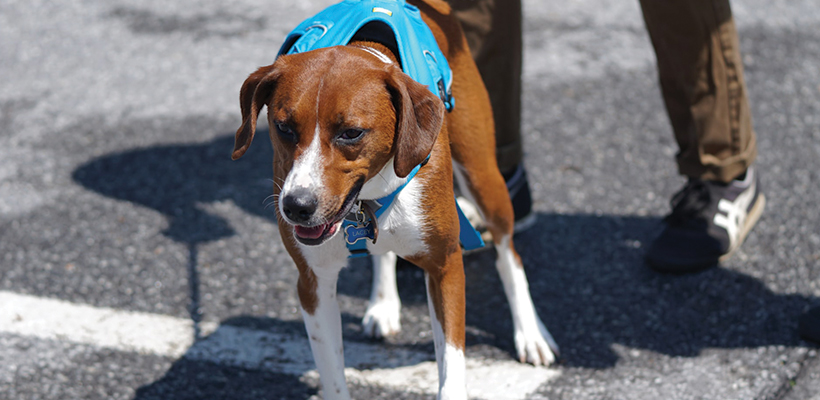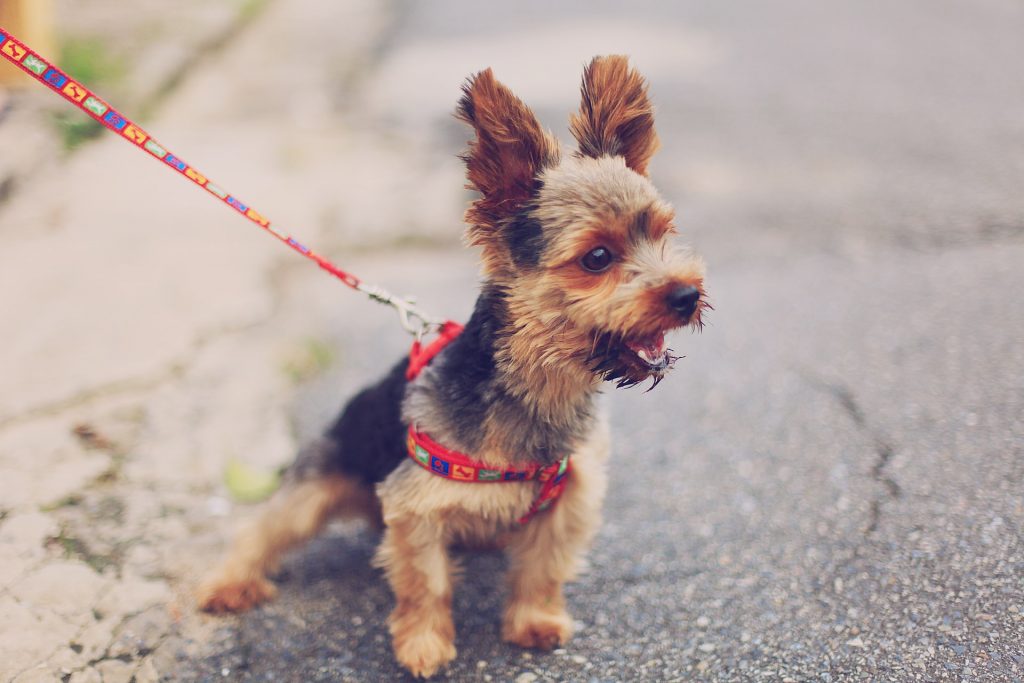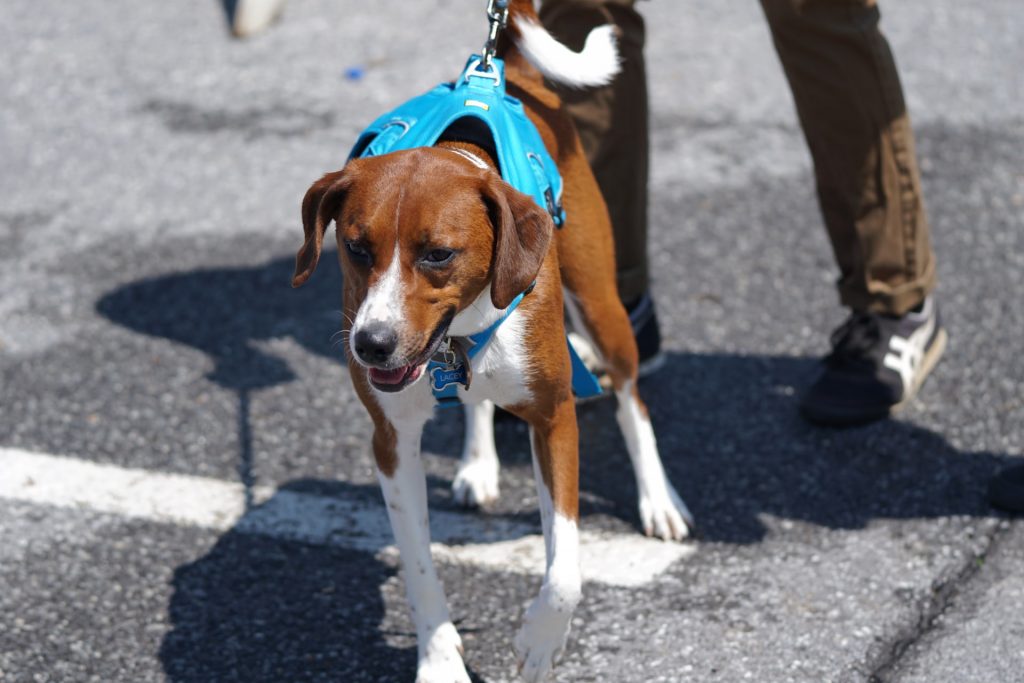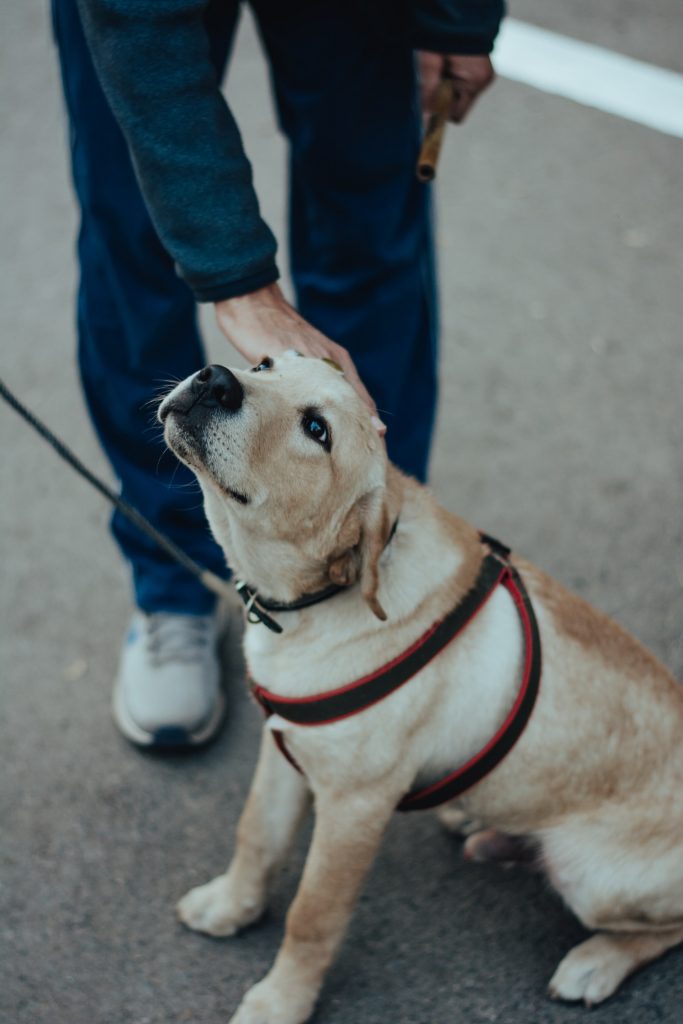
This article is contributed by guest writer, Natasha Dragovic (Creator of TruePetStory).
How To Stop Leash Aggression In Dogs – 3 Steps
Does your well-mannered furry friend suddenly turn into a devil the moment you clip a dog leash on him? He’s not the only one. In fact, this change of temperament is so common that it even has a name – leash aggression. But how to stop leash aggression? It’s a problem many dog owners face, and it truly can frustrate a person.
Dog walks should be enjoyable, and if your pup stresses you out during them, something is wrong. Especially if your otherwise calm pooch suddenly lashes out at other dogs on the street! Although leash-aggressive dogs will seldom bite, this is still very uncomfortable. Many owners decide to stop taking their dog for a walk altogether.
Luckily, there are a few ways to prevent this occurrence.
Here’s how to stop leash aggression in dogs – but first, you have to understand why it happens.

Photo Credit: Silvana Carlos via Unsplash
What is leash aggression?
Leash aggression rarely starts suddenly – unless you have an abused dog who is afraid of being constrained. This usually begins as an unwanted behavior with no signs of ill intent that occurs when your pooch approaches other dogs. These behaviors tend to frustrate owners, and they then try to control their pet by tightening the leash. Sometimes, owners might even use verbal or physical punishment.
Your reaction to this unwanted behavior may have quite the opposite results than you might think. Dogs don’t have the same mental capacity as humans do. They’ll think that your reaction is because other dogs and people approached them. This will only lead to their stronger reaction whenever another dog comes nearby.
Now that you know what causes it, it’s time to learn how to stop leash aggression in dogs.

Photo Credit: Jeffrey F Lin via Unsplash
Use treats
One of the first steps you can take is to remove the tension from the leash by using treats. How to do so?
The best plan would be to take your dog on a walk while he is hungry. Bring a bag of treats with you – a good idea would be to use some treats you don’t normally give to your pup at home. Regular treats won’t be as appealing when there are so many distractions.
Once you notice another dog approaching you and your pup noticing it, it’s time to act. Use some verbal stimulation, vocalize a command, such as “Look here!” or “Cookie!”, then put a treat in front of his nose. The moment the dog walks past you, stop feeding treats to your pup.
If your pup is too distracted during walks, start giving him treats by sitting on the bench first. Continue with walks about a week later. This will teach your dog that another dog means something positive. If he connects the arrival of other dogs and people with treats, he’s less likely to lash out at them.

Photo Credit: Artem Beliaikin via Unsplash
Commands
If your dog is calm enough after about a week of you giving him treats, it’s time for the next step.
Hopefully, your pooch is already trained in some basic commands, such as “Stay” or “Sit”. Start implementing them on the move, when an unknown dog approaches you. Sure, this won’t be of use if your dog is too distracted, but if he already passed the test with treats, he should be more eager to listen to you.
Keep in mind that you should be entirely focused on your pup during this step. If you’re texting, listening to music, or talking on your phone, your pup won’t listen to you.

Photo Credit: Muhammad Abdullah via Unsplash
Ask for professional help
The best way how to stop leash aggression in dogs is to teach him proper off-leash interaction. However, this won’t be possible without a professional, especially if your pup is a bit on the aggressive side.
It isn’t a shame to contact a professional trainer to help you with your aggressive pooch. These people know how to deal with cases such as yours, and they’ll point out some of the mistakes you’re doing, as well.
Bottom line
Leash aggression isn’t a rare occurrence, and many dogs have problems during walk time. However, this doesn’t mean you should let him be. It’s essential to know when and how to act, especially if your dog’s behavior could cause damage to him or another dog.
Knowing how to stop leash aggression in dogs is the first step to being a responsible pet parent. Don’t be ashamed to ask for professional help if you see no other way to help your dog – and yourself.
